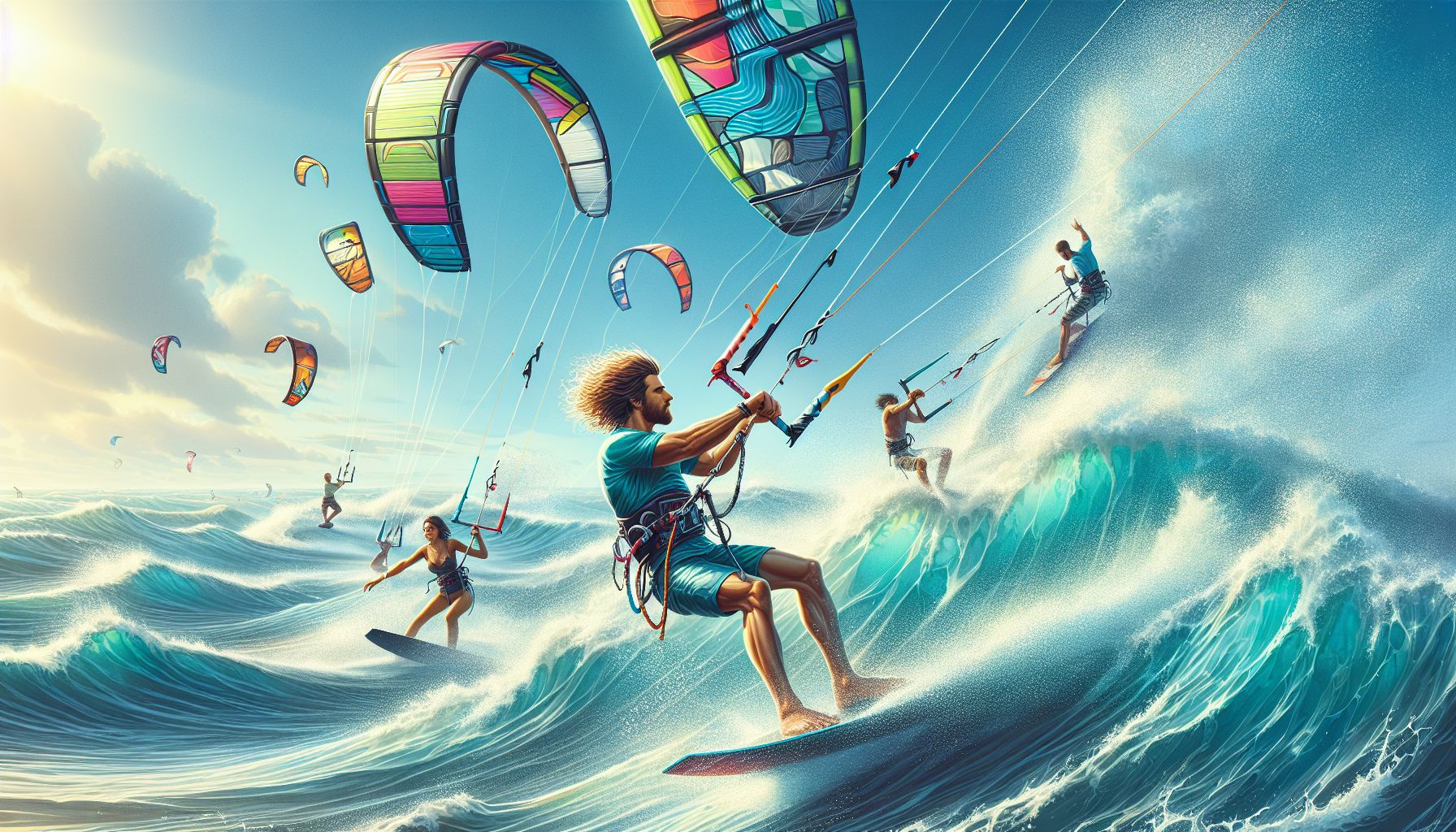Kiteboarding, also known as kitesurfing, is an intriguing mix of paragliding, surfing, windsurfing, skateboarding, and wakeboarding. This exhilarating sport has been luring adrenalin junkies from around the globe since its inception in the late 90s. Even if you’re not a self-proclaimed adrenaline enthusiast, the unique blend of wind and water-associated with kiteboarding is bound to allure you.
The Beginning – Humble Roots of a High-Flying Sport
Kiteboarding is inspired from multiple disciplines, yet it has grown into an entirely distinct entity, commanding respect and awe among water sport enthusiasts. The journey of kiteboarding began when brothers Bruno and Dominique Legaignoux developed and patented an inflatable kite design in the late 70s and 80s, primarily for kitesailing.
However, in the late 90s, the sport took flight as a standalone adventure sport, growing exponentially both in terms of techniques and equipment. Soon, visceral images of kiteboarders carving the water surfaces and sailing high into a vivid blue sky filled magazines and travel brochures, turning heads worldwide.
Embracing the Elements – Understanding the Sport
Kiteboarding essentially combines elements of several water and air sports. The rider stands on a board with foot straps or bindings, powered by a large controllable kite attached to a bar, which the rider holds on to.
The wind propels the kite, and the kite pulls the rider across the water. With the help of a board, kiteboarders harness the power of the wind to skim across the water, leap into the air, and perform a range of freestyle maneuvers.
Gear Up – The Essentials
Like any water sport, kiteboarding requires skill and specialized equipment for a safe and enjoyable experience.
- Kite: Kites come in various shapes and sizes, each serving different purposes and skill levels. Inflatable kites are often used due to their buoyancy and ease of control.
- Control Bar & Lines: The control bar and lines are the kite’s steering mechanism. The rider holds on to this bar to manage the kite’s direction and power.
- Board: Kiteboards are similar to surfboards and can be direction-specific or bidirectional.
- Harness: The harness attaches the rider to the control bar. It diverts the force of the kite from the rider’s arms to their body, offering better control and comfort.
Apart from these, safety equipment like helmets, life vests, and wet suits are also crucial.
Getting Started – Learning The Ropes
Learning kiteboarding requires commitment and training. Multiple kiteboarding schools around the world offer basic and advanced training courses. The basic training typically covers wind dynamics, kite setup, control techniques, safety measures, and self-rescue methods.
Safety is paramount in kiteboarding. Weather changes, strong tides, unexpectedly powerful gusts of wind can turn into major hazards if you’re inadequately prepared.
Mastering the Wind – Techniques and Styles
There are several kiteboarding styles, each demanding different skills and equipment.
- Freeride: Freeride is the most popular kiteboarding style. It involves riding back and forth across the water with no particular path or pattern.
- Freestyle: Freestyle involves performing tricks, jumps, and maneuvers. It requires more skills and experience than freeride.
- Wakestyle: Similar to wakeboarding, wakestyle kiteboarding involves performing high jumps and tricks.
- Wave-riding: This style is more like surfing, using the power of the waves rather than relying solely on wind power.
Foilboarding and speed racing are other exhilarating variants of this versatile sport.
Celebrating Kiteboarding – Competitions and Events
Kiteboarding’s global rise has initiated several high-profile competitions and events. The World Kiteboarding Championships is one such event, aiming to celebrate and promote the sport further.
Conservation & eco-friendly initiatives
Ironically, the sport that harnesses wind also raises concerns about its environmental impact. However, initiatives are now focussed on making kiteboarding more eco-friendly by designing equipment with sustainable materials and emphasizing beach clean-ups.
Conclusion
Whether you seek the pulse-pounding thrill of soaring through the air or the serenity of skimming over a glassy sea, kiteboarding promises a unique blend of adventure, challenge, and fun. It’s time to let the wind guide you and embark on an unforgettable journey amidst the sun, sea, and sky.
So, are you ready to set sail?
Note: Participating in water sports can be dangerous. Always ensure you are trained, equipped, and prepared before engaging in any outdoor activities.
